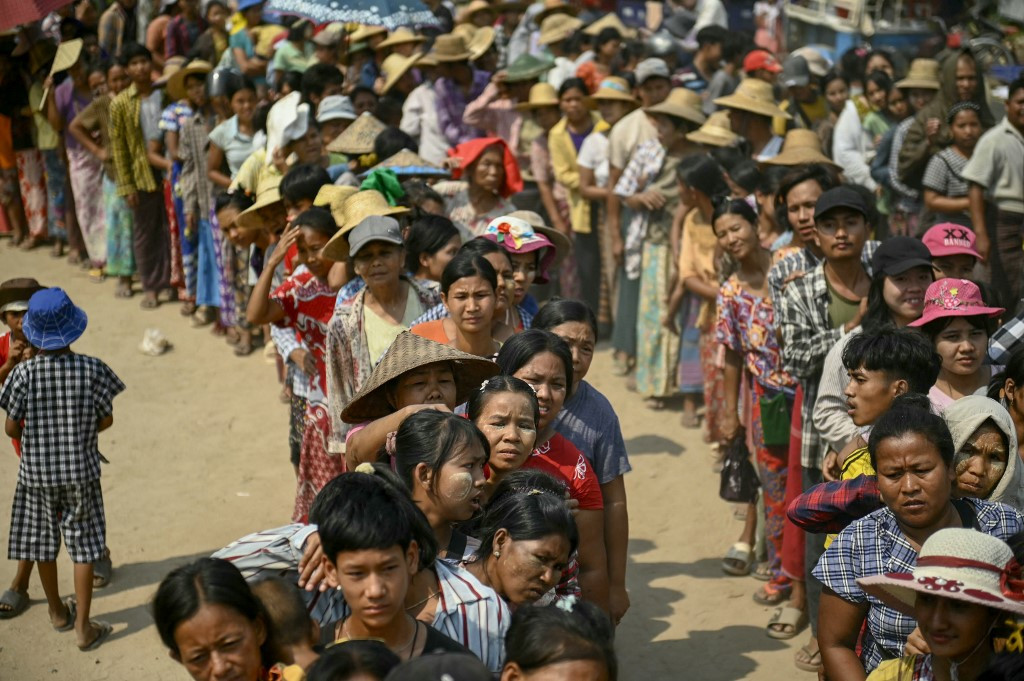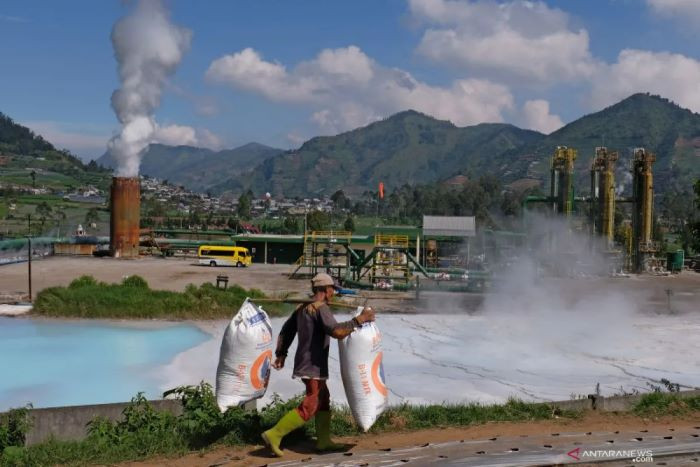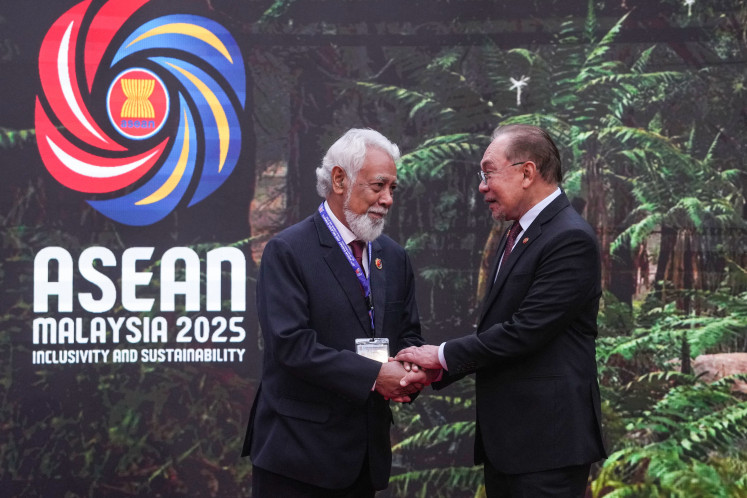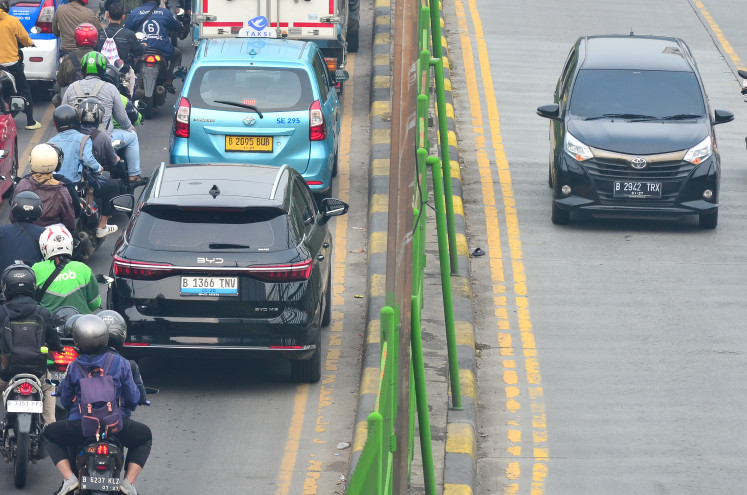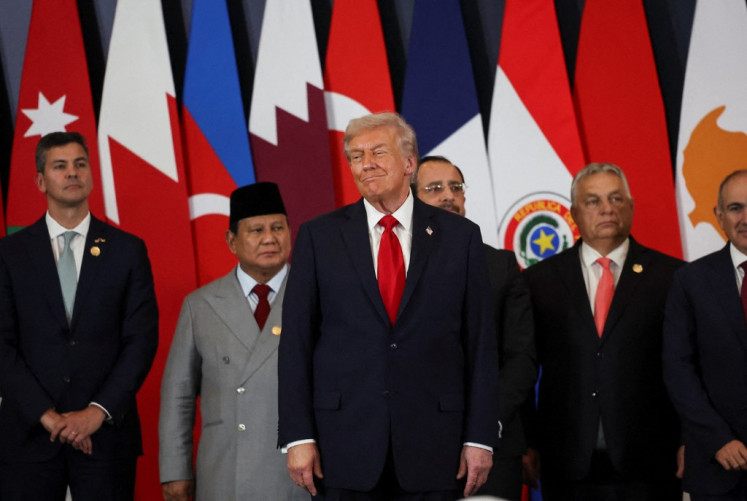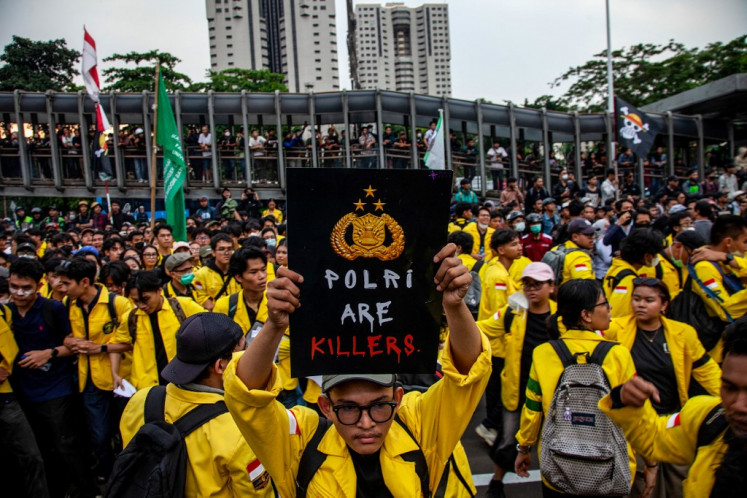Popular Reads
Top Results
Can't find what you're looking for?
View all search resultsPopular Reads
Top Results
Can't find what you're looking for?
View all search resultsHow growing ASEAN leadership helps the region manage disasters
The so-called humanitarian reset is shifting the response to humanitarian crises, whether caused by natural disasters or man-made conflicts, to local leadership, with international organizations playing a supportive, complementary role.
Change text size
Gift Premium Articles
to Anyone
W
hen disasters strike in Southeast Asia, the first to respond are no longer international agencies; they are national governments, local communities and increasingly, the role of the regional institution ASEAN is becoming more prominent. This shift toward local leadership is not just a trend. It’s a transformation that is charting a new direction in humanitarian action.
In February, the United Nations emergency relief coordinator, Tom Fletcher, announced a “humanitarian reset”. At its heart is a bold but necessary idea: Shift power to local and national humanitarian actors, give more control to frontline agencies and affected communities and decentralize decision-making.
Southeast Asia is one of the most disaster-prone in the world. From typhoons and earthquakes to floods and volcanic eruptions, the scale and frequency of disasters is on a different scale than in the rest of the world. Climate change, urbanization and conflict, especially in Myanmar, are compounding the risks.
But ASEAN is not standing still. It is building a regional humanitarian system that is more responsive and rooted in local leadership, supported by international partners, including the United Nations, in complementarity efforts.
The March earthquake in Myanmar was a stark reminder of the region’s vulnerability. A 7.7-magnitude quake killed over 3,700 people and affected thousands more, including in areas suffering from active hostilities. Myanmar was already facing a humanitarian crisis, with 20 million people in need due to civil conflict and climate-induced disasters. The earthquake compounded these challenges, underscoring the need for coordinated, anticipatory and locally led responses.
Climate-related disasters are also escalating. According to the international disaster database EM-DAT, 146 million people in the region were affected by climate events in 2024, an increase of 15 million from the previous year and 11 percent above the five-year average.
Typhoon Yagi alone impacted over 7.5 million people across Cambodia, Laos, the Philippines, Myanmar, Thailand and Vietnam. It caused widespread displacement, destroyed homes and croplands and disrupted livelihoods, with women and children bearing the brunt of the impact.
In Indonesia, volcanic eruptions, floods and landslides continue to wreak havoc, particularly in informal settlements in hazard-prone urban areas.
These crises demand more than reactive aid. They require anticipatory action, regional coordination and empowered local leadership. ASEAN is showing the way through nationally led efforts that are honoring their obligation as primary responders to safeguard the welfare of their citizens in disaster situations.
Indonesia offers a compelling example of this shift. The government has invested heavily in its own emergency response systems, reducing reliance on international aid for medium-scale disasters. Local NGOs are now frontline responders supported by national policies, regulations and financing, including billions of rupiah raised through Islamic social financing like zakat and infaq. This has enabled Indonesia to take ownership of its disaster management, positioning national and local actors as key partners in community-level response.
This is not an isolated case. Across ASEAN, the regional disaster response system is growing stronger. The ASEAN Agreement on Disaster Management and Emergency Response (AADMER), adopted in 2005, provides a legally binding framework for cooperation. The ASEAN Coordinating Centre for Humanitarian Assistance (AHA Centre) is at the heart of this system, coordinating responses and building capacity with support from development partners and the UN.
As a result of ASEAN’s growing mandate and capacity in humanitarian action, the partnership between the region and the UN has evolved. The focus is no longer on direct humanitarian support but on technical cooperation and capacity building in multiyear efforts that build knowledge, systems and confidence in national leadership. This includes anticipatory action, or measures taken once a disaster is predicted but before it strikes. It is a model of how international actors can support rather than lead humanitarian efforts.
The partnership between ASEAN and the UN Office for the Coordination of Humanitarian Affairs (UNOCHA) is a model of how regional and global actors can work together. It’s built on partnerships and complementarity of mandates.
ASEAN brings proximity, legitimacy and rapid access to affected member states. UNOCHA brings global tools, financing mechanisms that enable local actors to access financial resources and the ability to engage diverse actors, including all parties in conflict zones to ensure humanitarian access. Together, ASEAN and UNOCHA are advancing a humanitarian system that is principled, realistic and grounded in local capacity and humanitarian principles.
Their partnership supports: joint crisis readiness and response for large-scale disasters, with the most recent case being Myanmar earthquake response where many lessons are being drawn on how to strengthen ASEAN-UN cooperation; capacity building, with UN OCHA supporting AHA Centre-led training, simulations and contingency planning; information exchange, combining situational analyses from both organizations to guide effective action; coordinated deployments, aligning the ASEAN Emergency Response and Assessment Team (ERAT) with UN-led mechanisms; and shared tools and standards, including needs assessments, coordination structures and civil-military frameworks.
These efforts reflect a growing recognition that regional institutions and national governments are best placed to lead humanitarian responses. The recently endorsed ASEAN Vision 2045 cements this direction, positioning the grouping as a strategic enabler of connectivity, resilience and autonomous regional architecture.
The humanitarian reset is about rebalancing the system to reflect today’s realities. The UN remains a trusted partner but its role is evolving, with renewed focus on strengthening its support role to governments and shifting from delivering to enabling.
UNOCHA’s contribution to this partnership includes financing tools that can be channeled to local NGOs, structured links to the broader UN system and the ability to deploy global disaster mechanisms. In conflict contexts, UNOCHA engages all parties to advocate for humanitarian space and ensure that civilians are reached, regardless of who controls the territory.
This model of cooperation supports the humanitarian reset by prioritizing local leadership and capacities, moving from reaction to anticipatory action, aligning national and regional disaster mechanisms and enhancing shared accountability.
It reflects a broader shift toward a more politically aware, operationally realistic and ethically grounded humanitarian system: one that recognizes the growing capacity of regional institutions and national governments while ensuring that the UN remains a principled and agile partner.
It’s time to stop asking whether local systems can lead. They already are. The question now is how global actors can enable change in leadership and support local structures better.
---
The writer is head of the United Nations Office for the Coordination of Humanitarian Affairs (UNOCHA) Indonesia.

